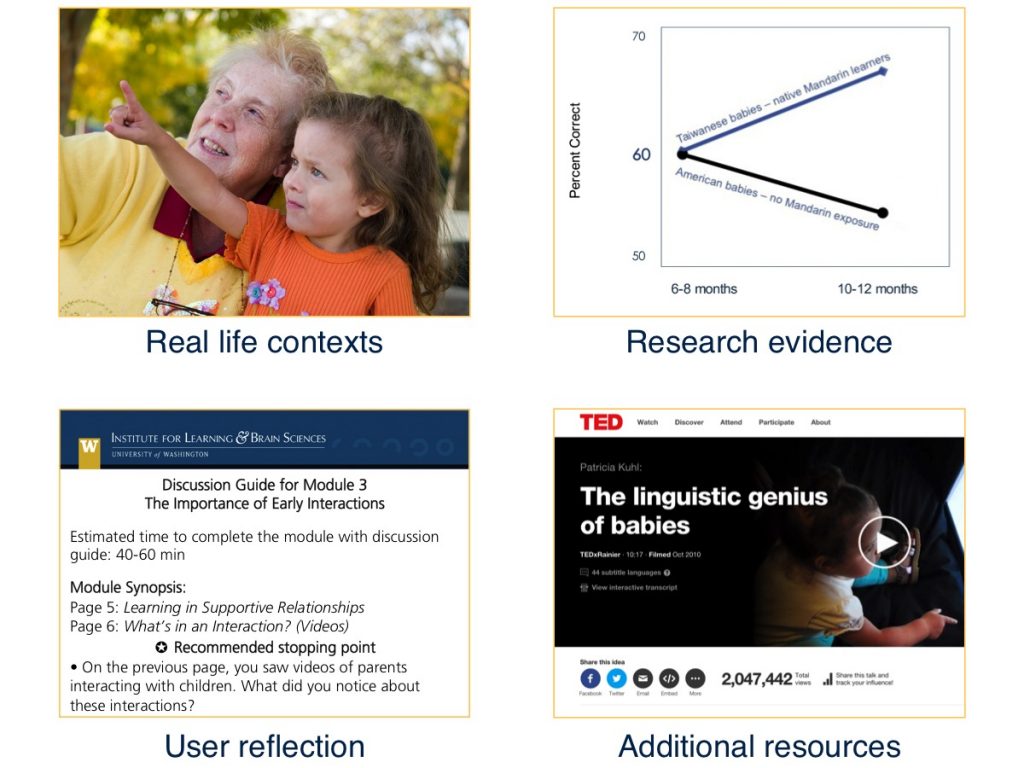
We designed each module to incorporate ‘real life’ contexts. We’ll explain research studies and the evidence they provide. We’ll discuss examples with videos and visuals, and by asking users to imagine scenarios.
We’ll also guide users’ reflection of the content. We’ll ask users to think about how the content relates to their experiences. We’ll ask questions like, “Have you observed this behavior before? What do you think it means?”
If users wish to delve further, each module has an accompanying discussion guide. The guides can be tools for individual users or groups. Each discussion guide suggests spots to pause for reflection, and questions to consider.
We have designed all modules in this series to be independent. But modules two and three form the core knowledge base. We suggest you view those modules next to build your knowledge and provide context for other modules. Some modules also have a natural order that might be helpful. For example, the two modules on language development discuss language development in chronological order. It may be helpful to learn how children acquire the sounds of language in the first year of life before learning how they acquire words as toddlers.
We hope that this information will help users in their own practices. Although these modules are a tool for users, each module only provides a snapshot of the research on a given topic. To cover all of the scientific research on each topic would take hours! We encourage you to check out the references and resources at the end of each module to further explore a topic.